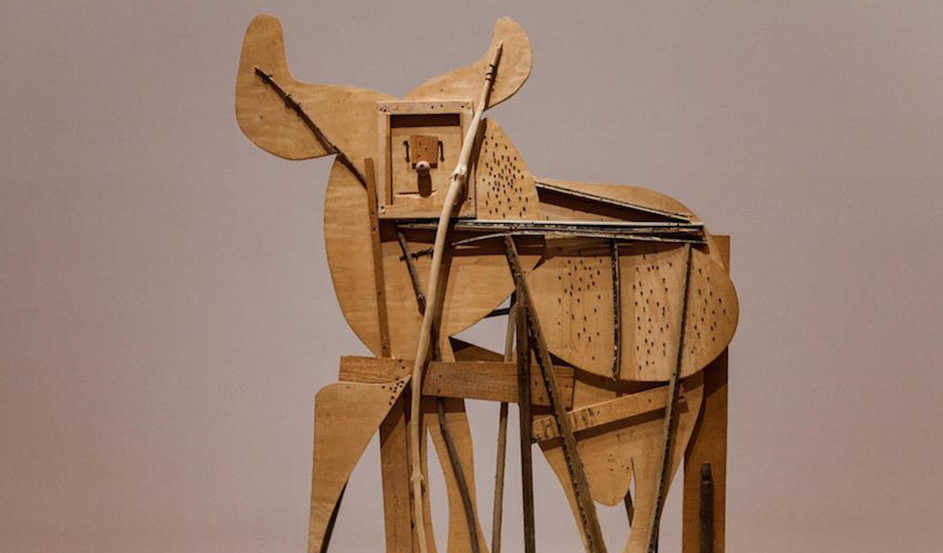
I JUST REALISED PICASSO USED SAWDUST – CREATIVITY IN GASTRONOMY
In a 2015 article in the New Yorker (“who’s to judge?”) the article suggested that “Just as there is Oscar bait, there is 50 Best bait.” David Chang was asked to imagine the archetypal 50 Best restaurant; “It’s a Chinese restaurant by a guy who worked for Adrià, Redzepi, and Keller. He cooks over fire. Everything is a story of his local terroir. He has his own farm and hand-dives for his own sea urchins.”
 Picasso used a combination of traditional materials, such as oil paint, chalk and charcoal, with unusual materials, such as newspapers, sand and sawdust. In addition, he also used found objects, such as the seat and handlebars of a bicycle in his sculpture “Bull’s Head.” He liked to experiment with new materials and techniques in his artwork in order to challenge the status quo. For example, Picasso was one of the first artists to make a collage. His 1914 painting “Pipe, Glass, Bottle of Vieux Marc” combined traditional materials such as graphite, India ink and gouache with a piece of newspaper, which was glued to the canvas. Picasso and his contemporary, Braque, were both responsible for creating the modern idea of the collage.
Picasso’s sculptures also used a large variety of materials. His early sculptures were modelled in clay and wax. He also used wood, ceramic, and bronze. In his 1914 sculptures “Glass of Absinthe,” Picasso cast six bottles of Absinthe in bronze and decorated them with real spoons. Another unconventional sculpture is Picasso’s “Guitar.” This sculpture featured planes of sheet metal and metal wires. Sheet metal is a common material for buildings, but it was not commonly found in fine art and sculptures.
Picasso used a combination of traditional materials, such as oil paint, chalk and charcoal, with unusual materials, such as newspapers, sand and sawdust. In addition, he also used found objects, such as the seat and handlebars of a bicycle in his sculpture “Bull’s Head.” He liked to experiment with new materials and techniques in his artwork in order to challenge the status quo. For example, Picasso was one of the first artists to make a collage. His 1914 painting “Pipe, Glass, Bottle of Vieux Marc” combined traditional materials such as graphite, India ink and gouache with a piece of newspaper, which was glued to the canvas. Picasso and his contemporary, Braque, were both responsible for creating the modern idea of the collage.
Picasso’s sculptures also used a large variety of materials. His early sculptures were modelled in clay and wax. He also used wood, ceramic, and bronze. In his 1914 sculptures “Glass of Absinthe,” Picasso cast six bottles of Absinthe in bronze and decorated them with real spoons. Another unconventional sculpture is Picasso’s “Guitar.” This sculpture featured planes of sheet metal and metal wires. Sheet metal is a common material for buildings, but it was not commonly found in fine art and sculptures.
Gastronomy Trends and Innovation
The principles in the top restaurants of the world guide a lot of the trends in gastronomy; whether it’s ‘nouvelle cuisine’, ‘molecular gastronomy’, local sourcing, foraging, story telling..etc These are all trends which grasp a generation or two of chefs who are eager to emulate the most influential chefs of their time, by mimicking and developing upon the philosophies of those recognised as the world’s top chefs. I guess the question I’m left asking is does this not in some way diminish true innovation? Yes, there is plenty of creativity within this framework (much of today’s which has been inspired by a personal hero of mine and my generation – the great Ferran Adria). But what is happening outside of this ‘top 50 world’? Adria like leading artists throughout history (think; impressionist, surrealists etc.) broke away from convention to develop this new avant garde, modernist gastronomy world that we live in. The chefs of the world’s top restaurants today are working on ideas which are, to a greater degree, extensions of the gastronomic paradigm he (Adria) set out. They have masterfully and skilfully channelled their creative energies towards taking these ideas, even further than I’m sure even Ferran thought possible! Like most chefs I have so much respect and admiration for all the Michelin and 50 best chefs all over the world and believe that with or without such accolades these chefs and their restaurants are outstanding bastions of culinary creativity. I began thinking about all the above when I was pondering a dish in my mind (something for an upcoming menu) and realised that part of the decision making behind the dish’s concept was being restricted by locality of ingredients (we don’t grow lime fingers in UK), this led me to think about why I impose such a restriction on my self – I’m hardly a chef in Kyoto who can forage my ingredients from the land around me – so why do I, like so many chefs I speak to, feel so passionate and have such strong convictions about such issues? Is it that we have become passionate about them out of a desire to emulate those who are at the top of their game? Again, I come back to a thought on the lack of true innovation (not creativity) this stimulates..Learning from Picasso
For those of you who have read this far I leave you with the result of a Google search I was looking at Picasso’s use of the materials in his art.. Did he feel any restrictions?
In Picasso’s sculpture “Bull’s Head.” he used found objects, such as the seat and handlebars of a bicycle.


Leave a Reply